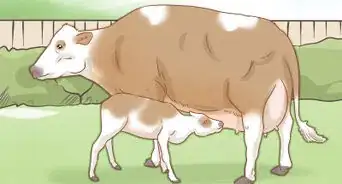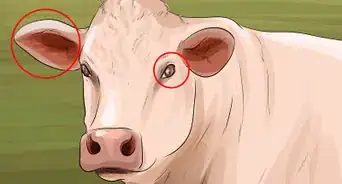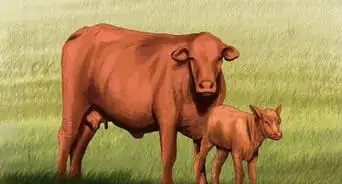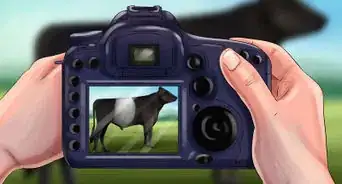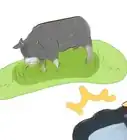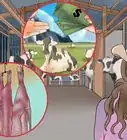This article was co-authored by Karin Lindquist. Karin Lindquist earned a BSc in Agriculture as an Animal Science major from the University of Alberta, Canada. She has over 20 years of experience working with cattle and crops. She's worked for a mixed-practice veterinarian, as a sales representative in a farm supply store, and as a research assistant doing rangeland, soil, and crop research. She currently works as a forage and beef agriculture extension specialist, advising farmers on a variety of issues relating to their cattle and the forages they grow and harvest.
This article has been viewed 133,411 times.
This is an in-depth guide of identifying Jersey cattle. Jersey cattle are the second-most common breed of dairy cattle in North America. They originate from the British Crown-dependent Isle of Jersey, which is located off the coast of France.
Steps
-
1Do a search on the Internet in a Cattle Breeds book for "Jerseys."[1]
-
2Study the characteristics of the breed. Note the following:
- Colouration: Jersey cattle coat colour ranges from a light fawn to almost black. Some Jerseys may have white on them, from diamond-shaped patches on their shoulders or hips, to white legs and a stripe from the top of the shoulder down to behind the elbows. Black Jerseys almost always has a tan-coloured saddle in the middle of their backs, from the withers to the top of the loins. They also have lighter colouration around their noses and eyes, and on the inside of each leg. A lot of fawn-coloured mature cattle have a darker face from just below their poll or just above their eye-brows to just before their noses. There will often be lighter colouration around their eyes and noses. Bulls often have darker colouration from the base of their heads to their shoulders. All Jerseys have dark eyes and dark pigmented skin around their eyes and their noses. They also have black hooves and a dark tail-switch. Those dark noses and dark eyes in Jersey calves make them look adorably cute, much more so than any other bovine calf of any other breed.[2]
- Body type and characteristics: Jerseys look to be more finer-boned and bodied than most any beef breed or even Holsteins. Just like Holsteins, though, Jerseys are quite angular in body type because they are selected to be a milk-producer and not a beef-producer. They have the same funnel butt characteristics that Holsteins have, and are quite thin and bony as well. Jerseys are a lot smaller than Holsteins though, a bit more than half the size, with a mature weight of only around 1000 lbs for cows and only 1500 lbs for bulls. Jersey cows have a large udder on them to accommodate for the demand for producing more milk than their calves would normally receive.[3]
- Head characteristics: Jersey cows are very feminine looking animals, with a finer, more feminine head than Hereford or Angus cows, with a similar head-shape (though a little less robust) as Shorthorn cows do. Jerseys are a naturally horned breed, though there are genetics for polled cattle as well.[4]
- Other characteristics: Jersey cows are quiet and very pretty animals, but are often known to have quite the sassy-girl attitude at milking time! This is because they are known to be kickers when you're trying to prepare their udders before milking, or just when you're trying to milk them out. But, even though they are notorious kickers, they have milk that is more rich in butterfat than any other dairy cow, which is great to use for dairy products like cheese, butter, and ice cream. Jersey bulls are infamous for their aggressiveness and unpredictability, and are often more dangerous to handle and be around than even Holstein bulls.
Advertisement -
3Memorize the details and characteristics of this breed.
-
4Go on a field trip or road trip and see if you can find farms and ranches with Jersey cattle. Take pictures of what you thought were Jersey cattle, and compare them with pictures of Jerseys on the Internet and in your Cattle breeds book.
Community Q&A
-
QuestionCan Jersey milk cause diseases in humans?
 KarinTop AnswererJersey milk does not create nor give humans diseases. Milk is not a disease risk. If it were, no Jersey calves would survive from consuming their mother's milk.
KarinTop AnswererJersey milk does not create nor give humans diseases. Milk is not a disease risk. If it were, no Jersey calves would survive from consuming their mother's milk. -
QuestionWhich fodder is best for Jersey cattle?
 KarinTop AnswererAny kind of fodder that is good quality, which is any grass and legume species that grows in your area.
KarinTop AnswererAny kind of fodder that is good quality, which is any grass and legume species that grows in your area. -
QuestionWhere can I purchase a cow, how much does it cost, and how much milk will she produce?
 KarinTop AnswererJerseys give around 3 to 4 gallons of milk per day. Prices are much more variable. Jerseys range from US$3,000 to well over $50,000 or more. Bottle calves are much cheaper, but it'll be a couple of years before you get any milk from a Jersey heifer calf. Jersey cows can be pretty expensive if they are good producing cows, and culls can be cheaper than prized dairy cows.
KarinTop AnswererJerseys give around 3 to 4 gallons of milk per day. Prices are much more variable. Jerseys range from US$3,000 to well over $50,000 or more. Bottle calves are much cheaper, but it'll be a couple of years before you get any milk from a Jersey heifer calf. Jersey cows can be pretty expensive if they are good producing cows, and culls can be cheaper than prized dairy cows.
Warnings
- Jersey bulls are extremely dangerous and are certainly not to be trusted when visiting a herd of Jersey or dairy cows with a bull in the midst.⧼thumbs_response⧽
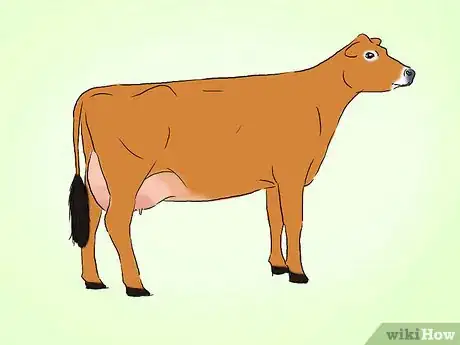


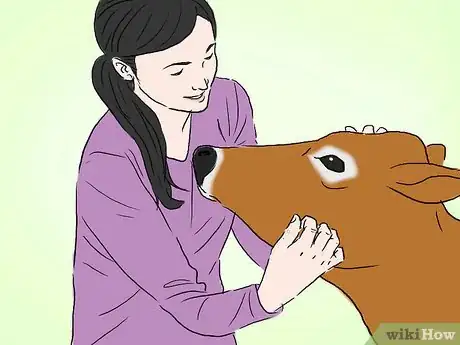
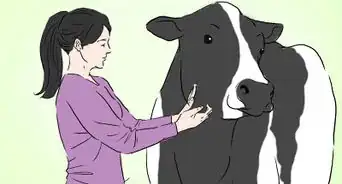

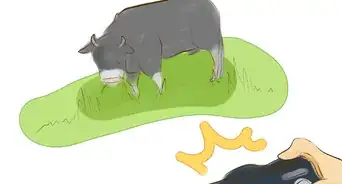
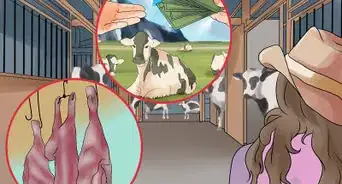
-in-Cattle-Step-6.webp)
